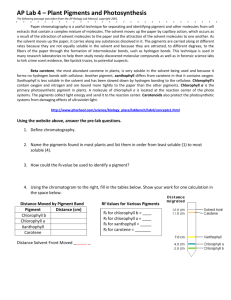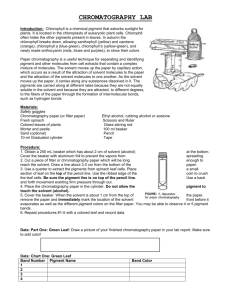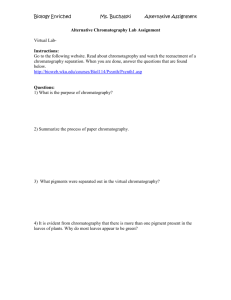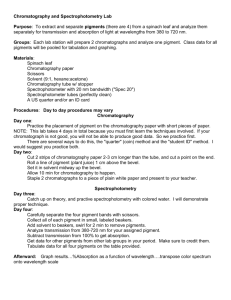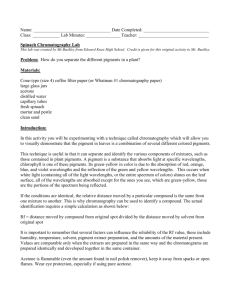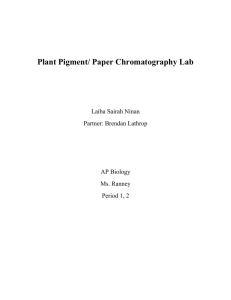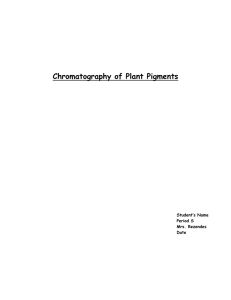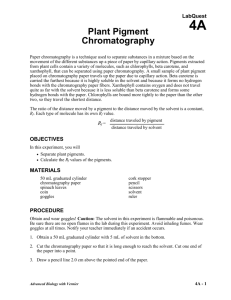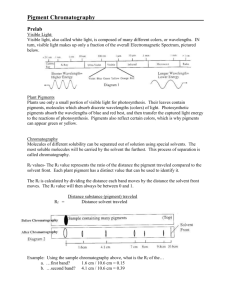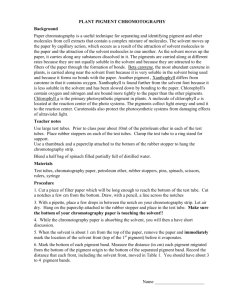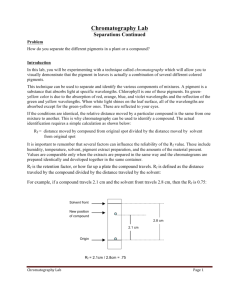Plant Pigment Chromatography Lab Worksheet
advertisement
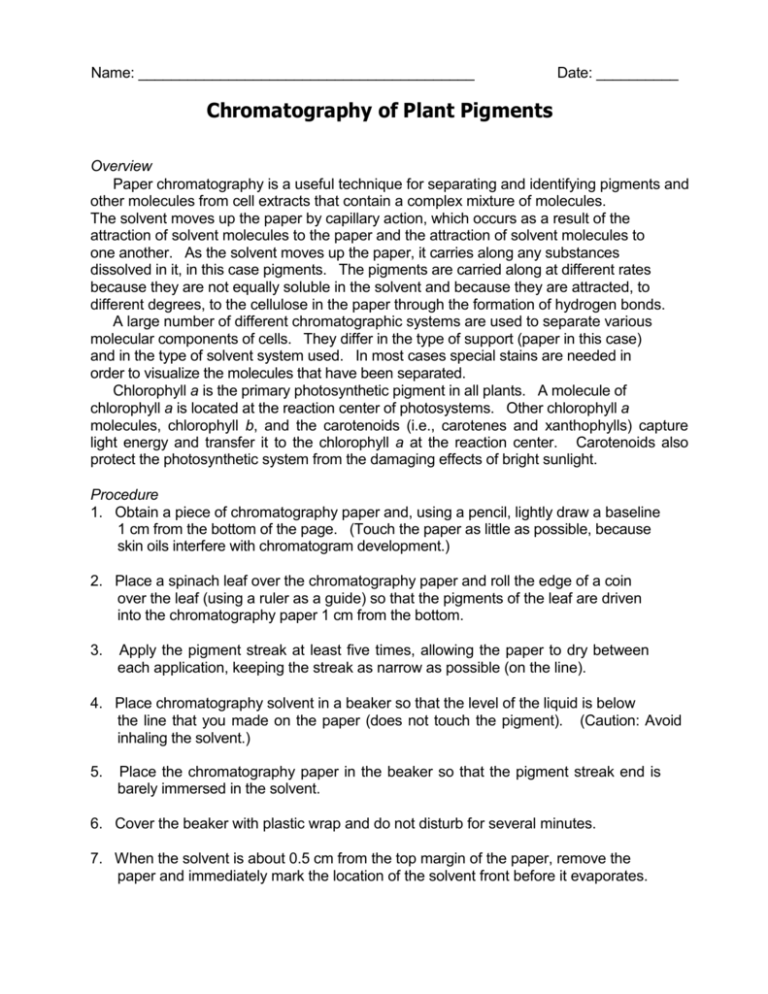
Name: _________________________________________ Date: __________ Chromatography of Plant Pigments Overview Paper chromatography is a useful technique for separating and identifying pigments and other molecules from cell extracts that contain a complex mixture of molecules. The solvent moves up the paper by capillary action, which occurs as a result of the attraction of solvent molecules to the paper and the attraction of solvent molecules to one another. As the solvent moves up the paper, it carries along any substances dissolved in it, in this case pigments. The pigments are carried along at different rates because they are not equally soluble in the solvent and because they are attracted, to different degrees, to the cellulose in the paper through the formation of hydrogen bonds. A large number of different chromatographic systems are used to separate various molecular components of cells. They differ in the type of support (paper in this case) and in the type of solvent system used. In most cases special stains are needed in order to visualize the molecules that have been separated. Chlorophyll a is the primary photosynthetic pigment in all plants. A molecule of chlorophyll a is located at the reaction center of photosystems. Other chlorophyll a molecules, chlorophyll b, and the carotenoids (i.e., carotenes and xanthophylls) capture light energy and transfer it to the chlorophyll a at the reaction center. Carotenoids also protect the photosynthetic system from the damaging effects of bright sunlight. Procedure 1. Obtain a piece of chromatography paper and, using a pencil, lightly draw a baseline 1 cm from the bottom of the page. (Touch the paper as little as possible, because skin oils interfere with chromatogram development.) 2. Place a spinach leaf over the chromatography paper and roll the edge of a coin over the leaf (using a ruler as a guide) so that the pigments of the leaf are driven into the chromatography paper 1 cm from the bottom. 3. Apply the pigment streak at least five times, allowing the paper to dry between each application, keeping the streak as narrow as possible (on the line). 4. Place chromatography solvent in a beaker so that the level of the liquid is below the line that you made on the paper (does not touch the pigment). (Caution: Avoid inhaling the solvent.) 5. Place the chromatography paper in the beaker so that the pigment streak end is barely immersed in the solvent. 6. Cover the beaker with plastic wrap and do not disturb for several minutes. 7. When the solvent is about 0.5 cm from the top margin of the paper, remove the paper and immediately mark the location of the solvent front before it evaporates. Analysis of Results/Lab Technique Calculate the Rf (Reference front) values for each of the four pigments using the formula: distance pigment migrated Rf = ______________________ distance solvent front migrated Record your Rf values here: __________ = Rf for xanthophyll (yellow) __________ = Rf for chlorophyll b (yellow green to olive green) __________ = Rf for chlorophyll a (bright green to blue green) __________ = Rf for carotene (yellow to yellow orange) Questions 1. Describe what happened to the original spot of simulated plant pigment. 2. a. Would a plant containing the pigments shown in the data table above be a source for yellow dye? Explain your answer. b. What other colors of dye might be available from the same plant? your answer. Explain 3. What factors are involved in the separation of the pigments? 4. a. Which of the four pigments, beta-carotene, chlorophyll a, chlorophyll b, or xanthophyll, is the most soluble in the solvent system used? Which is the least soluble? Explain your answers. b. Which of the chlorophyll forms is more soluble? Why? 5. If the experiment were run on a longer paper for a longer time, the separation between chlorophyll a and chlorophyll b would become larger. Eventually, two completely resolved spots would be seen. Why? Would you expect the Rf values for the pigments to significantly change between a shorter and a longer run? 6. What type of chlorophyll does the reaction center contain? other pigments? What are the roles of the
